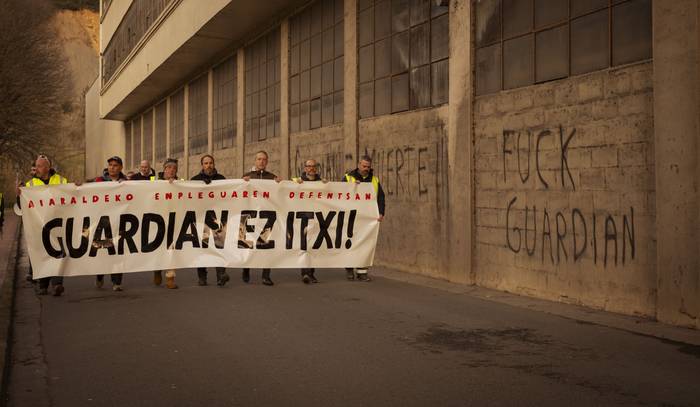Can working time be reduced?
- The division of labour is an essential, equitable and, above all, viable alternative to combating unemployment.

In addition to the current chronification and disparagement of unemployment, there is an increase in low wages and undesirable part-time working hours, particularly among women. According to data from the latest Labour Force Survey (APN), the unemployment rate is 10.6% in Navarre and 11.5% in the CVA (16.6% and 18.8% if the unwanted bias is considered to be unemployment). The unemployment rate for women is above 24%. In this situation, the reduction in working time - that is, the distribution of employment - is more necessary than ever.
Taking into account the behaviour of actual Unified Labour Costs, in addition, the reduction is a fair measure. Between 2010 and 2015, the cumulative cut in Navarre has been 5.6% and in the CAV 6.9%, as wages have grown less than productivity.
A plan for Gipuzkoa
Comparing the data of EUSTAT and the Hacienda Foral de Navarra between 2008 and 2012, the average effective pressure of direct taxes (IRPF and Companies) was 15.4% on labour income and 5.5% on capital income. In particular, large companies use tax advantages to avoid corporate tax: freedom of depreciation, deductions to compensate for negative tax bases from other years or double tax exemption… As a result, less than 40% of capital income is taxed on the Treasury, while in the case of salaries it is 100%.
In addition to what is necessary and fair, the reduction in working time is the most economical and effective policy to turn the two trends around. Taking into account the example of Gipuzkoa, it is interesting to analyze the impact on the distribution of work of reducing working hours by 10% of the wage population. The objective would be to reduce the unemployment rate by 5% and would be based on two starting points: the lack of changes in wages or the fall in wages by 5% as a result of the reduction in working time.
In both cases, the aggregate revenue of public administrations could be very high: 3.4% of GDP in the first starting point and 2.5% in the second. In the case of wage cuts, wage earners would initially pay a cost equivalent to 2.9% of GDP and, in this case, low and average wages should be progressively compensated by IRPF. Costs for businesses would range from 7.3% to 3.3% of GDP in both situations and an equitable sharing mechanism would be needed to avoid penalising the most intensive companies in their work, as they are not usually the ones with the most benefits. Turnover tax could be done through a progressive tax, on the basis of revenue. Once the Distribution Tax's share of the costs resulting from the reduction of working hours is subtracted, we would obtain the positive or negative liquidative balance of the company. The result of the tax should be neutral, except in the case of companies that would not participate in the reduction of working time. In this case, additional public revenue would be found which could be used for the creation of public employment.
And Navarra?
The Foral Community is the only place where a policy of reducing working time is being discussed. The cut can be applied at an autonomous level, without the Spanish State having to wait for such policies to be implemented. In addition, there would be additional alternatives to the distribution tax.
On the one hand, incentives in the private sector and the distribution of public employment, which can also be included in the subcontracting clauses. On the other hand, the government should promote the Employment Pact through collective bargaining between employers and trade unions. In any case, the implementation of policies to reduce unemployment, the fairer distribution of income, the establishment of fairer taxes for wages and benefits and the sharing of employment and care is necessary, fair and, above all, viable.
This article was published by Hordago - El Salto and we brought it to the Basque Country thanks to the Creative Commons license.
Public education teachers have the need and the right to update and improve the work agreement that has not been renewed in fifteen years. For this, we should be immersed in a real negotiation, but the reality is deplorable. In a negotiation, the agreement of all parties must be... [+]
Economists love the charts that represent the behaviors of the markets, which are curves. I was struck by the analogy of author Cory Doctorow in the article “The future of Amazon coders is the present of Amazon warehouse workers” on the Pluralistic website. He researches the... [+]
























